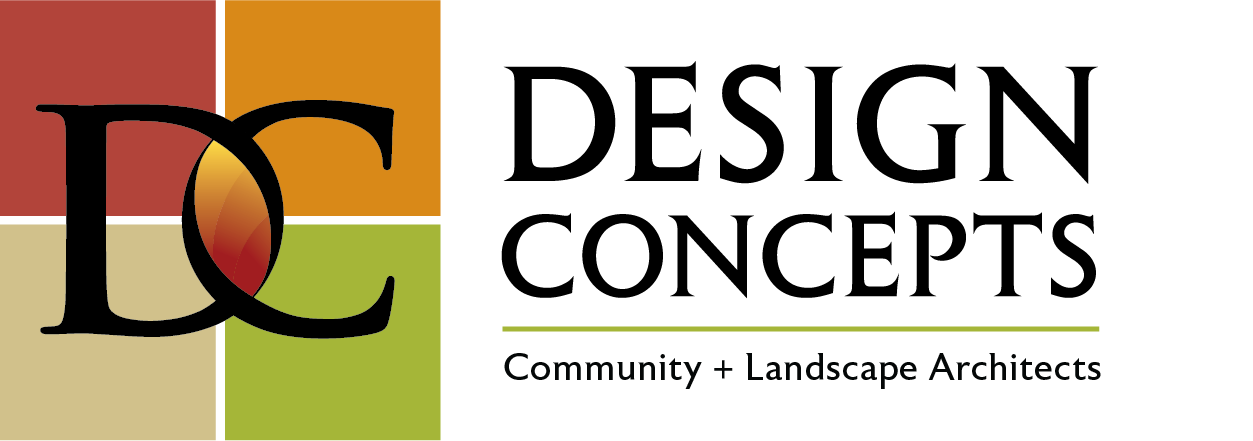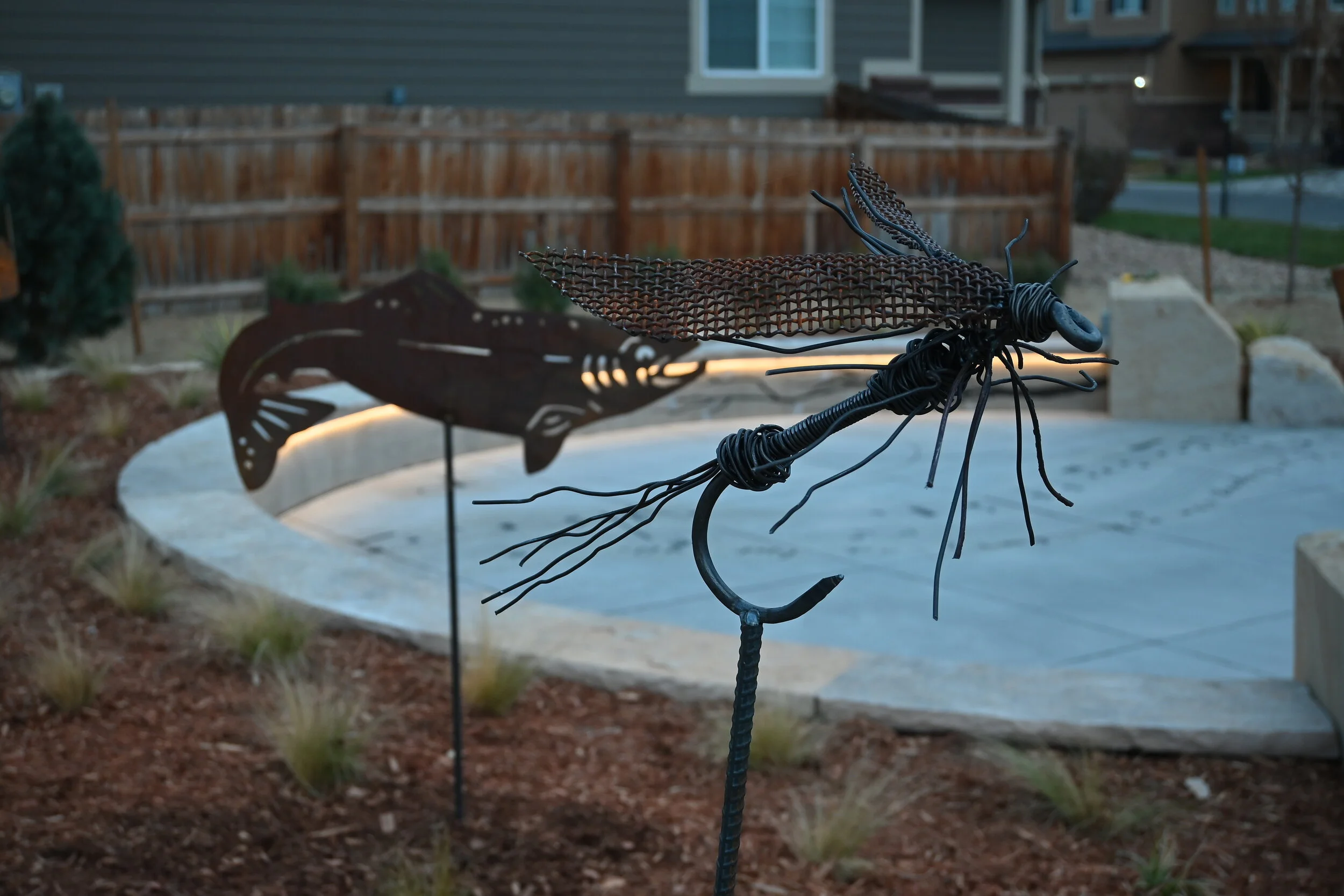Carter Marshall, PLA, is awarded the American Planning Association’s 2018 Colorado Merit Award for Community Resiliency.
An Unordinary Process for Superior’s Wildflower Park
Local kids. A run-down park. An opportunity to make a difference.
Parks are democracy. They evolved out of a tradition of town squares and church greens. In days past, long before they were ‘parks’ they were outdoor marketplaces, shared grazing lands, public commons, or parade grounds. These were community spaces, places for the people. Nearly 300 years ago civic leaders in early American cities recognized the importance of parks spaces for “the Recreation & Delight of the Inhabitants of this City."
Today they serve the same purpose. Sometimes, though, they need a little help.
A non-profit called Public Achievement at the University of Colorado, Boulder matches college students as mentors for at-risk K-12 youth. They identify problems in their community and create a project to overcome those issues. When they reached out to Design Concepts a couple weeks back, we jumped at the chance.
We met with the kids on CU campus on an October afternoon, and had the opportunity to connect with them and discuss their project. To us this is an issue of social justice. But they just want a place to play.
Peace Park at Lafayette Gardens, a small private park in a mobile home neighborhood, serves many low-income families in town. But the park itself is falling apart. The kids we met with had grand visions for what it could be—what it should be. They were excited to imagine the possibilities: volcanos, zip lines, trampolines. But the basketball hoops also need nets. And the only shade shelter was vandalized and had been removed. And the merry-go-round was broken.
Our role in all of this was to help keep them moving. We shared our ideas about what makes a park successful: gathering spaces, access, connectivity, usability, nature, and fun. We put them in touch with entities that might help, including the Colorado Center for Community Development and City of Lafayette Parks and Recreation Department. And we offered to stay involved as the project moves forward. At least, we helped a group of kids work to make their park better. At best, we continued the democratic tradition that led to the ‘park’ in the first place.
Winning Big with Colorado Lottery Money at SDA Colorado 2016
Ever play the lottery? If so, I sure hope you won big bucks! Besides the joy of cash winnings, did you get a warm and fuzzy feeling just for playing?
Here’s the good part. Even if you lost a buck or more; you helped fund some incredible outdoor experiences for kids and adults. When you play the lottery in Colorado part of the proceeds go to Great Outdoors Colorado (GOCO) used to fund projects that get people outdoors for a healthier lifestyle.
Colorado is the only state with such a program. Take a moment to appreciate the potential of this program, it's pretty remarkable. GOCO has helped bring to life some of the most incredible and unique outdoor experiences from open spaces to parks to school yards.
Even if you already knew about GOCO, did you know that you don't need to be a public agency to receive matched funds from them?
We're finding more special districts building their own parks, either in partnership with a public agency or on their own. Last month at the Special Districts Associations of Colorado conference we helped district managers realize just how attainable GOCO funds are for them.
Money for Planning & Built Projects
Grant funds may even be obtained for planning efforts, not just built work. The list of grant opportunities is much broader than most people know—you just might need to get creative with it.
Rather than thinking about it as a specific effort to fund a single project, think about it as building your community. What builds a community?
Building Community with GOCO Funds
What is your community missing? What is it your community needs? Don't know? That's ok, there’s experts to help with the process of figuring that out. You just need to have the desire to add value to your community. Essentially, making your community a place your neighbors will envy.
There’s a lot of resources out there to help along the way, including the GOCO team themselves who offer technical assistance for specific projects. The first step may be to reach out to them just to let them know you're interested but not sure what to do next. It can be as simple as that. Visit GOCO's website for a list of specialists who can work with you towards success.
If you not multiplying your funds with grant resources, why not?
Impressed by Erie Leadership, Impressed by Social Change
I often take my grandson to Erie to ride our mountain bikes together. I am intrigued by how the citizens and staff of the Town has been very successful at creating an activated citizen workforce to build real projects. The projects I’m familiar with accomplish what most people seem to want today: They form “social centers” for young and old. How does Erie do that? What makes them special?
Erie has been able to mobilize a multi-generational workforce that “gets it”. This simply means the ability to understand the kind of recreational venues that really appeal to today’s Coloradoan: walking, mountain biking, and interestingly dogs (today’s greatest social ice-breaker). Erie seems to understand that what most people look for in recreation is an activity that allows them to choose between solitude and gathering. In Colorado, finding solitude is fairly easy – abundant trails and open space, land and space to spread out. What’s harder is helping people overcome our modern reticence towards creating social connection. It has become a lot easier to hide in our house behind our TV, computer and family than to join the greater community. Between bikes, trails, and most of all dogs, Erie gets it. Their proactive town and citizenry involvement is one to be proud of. This is a community to emulate.
The largely citizen built Sunrise Ridge Bike Skills Trail for example, offers differing levels of terrain. The degree of difficulty ranges from paved ADA walks, to real single track challenge. Even though my grandson felt challenged on one green part of the trail, he wasn’t daunted by it. On the other hand, only half of my road bicycle team was comfortable going down a “blue” section of the trail the first time. All the trails are visible from each other. That is true multi-generational play at best. The trails that climb from town traverses the overlooking hillside above Erie. These trails are useable by almost anybody, and have amazing front range views. They are walk, bike, and dog friendly. They are highly used and loved. You’ll encounter enough trail crossings that you’re likely to meet your neighbors. That’s what’s really important.
Why are dogs so important, and why are they such a great addition to today’s social/recreational places? Try this: Go up to somebody in a park sometime and tell them you’re just here to meet people…that might not go over so great, right! Try this instead: Go up to someone and ask about their cute dog…it is the modern safe conversation starter. People do not go to dog parks for the dogs; yes the dogs are benefitted, but the real reason is because there will be other people there. And they are easier to meet! Unlike with previous generations dogs have become part of our families. Their jobs went from herder and hunter to lap and love. And now they are the great social introduction.
Erie’s first dog park, the Boneyard at Reliance Park, just opened this week. This is just another example of how the staff and the citizens of a town got together and created just the right thing for our time. My colleagues at Design Concepts helped create the conceptual design for the park. It made us feel a part of the citizen-empowered force in Erie. We love to help with the genesis for real social change. More importantly, we have always regarded park and schoolyard design as creating places where community building happens. Anyone would be really happy to be a part of this kind of project.
Erie seems to be taking all of the right steps in building community:
- Work together with citizens and government.
- Listen to the input that only citizens can bring.
- Focus on building projects that incorporate the input and skills of townspeople.
- Build professional level improvements
- Take part in the socially conscious choices being designed and built.

















